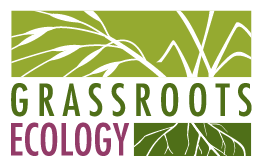Native Plant of the Month: Sticky Monkey Flower
Magenta pink, creamy orange, bright yellow, and scarlet red: these are all colors displayed by monkeyflowers, a kaleidoscope of nearly 200 species whose flowers vaguely resemble monkey faces.
Though they are distributed globally, California is blessed with an especially high concentration of these vibrant plants.
The diverse hues of monkeyflowers attract a wide range of pollinators. Hummingbirds love the red and orange-flowered species, while bees, which can’t see red, tend to prefer the yellow and purple monkeyflowers, and nocturnal moths gravitate towards pale petals that stand out at night. Monkeyflowers’ habitat needs also vary greatly, ranging from wet seeps and ephemeral ponds to hot chaparral and toxic serpentine soils.
This menagerie of monkeyflowers has long captivated humans. Indigenous people of California and beyond traditionally use them for medicine and food. Scientists study them to unveil the secrets of evolution, speciation, and pollination.
For decades, taxonomists have debated whether monkeyflowers should all be placed in the genus Mimulus, or if they should be separated into multiple groups to better reflect their various lineages. Here, we will follow the Jepson Manual, the go-to guide to California’s flora, which has adopted the latter approach. Below, we highlight just a few of the many monkeyflowers of California:
The Seep Monkeyflower
Seep monkeyflower (Erythranthe guttata)
As indicated by its name, seep monkeyflowers (Erythranthe guttata) enjoy wet areas like seeps and stream banks. Their showy, yellow flowers have spotted lower petals, which entice bees to land and take a sip of nectar. It is a highly variable species, with some individuals being annual and others perennial, and they grow in a wide range of soils and habitats as long as they are moist. This diversity has made it an ideal species for research on genetics and evolution.
The Scarlet Monkeyflower
Scarlet monkeyflower (Erythranthe cardinalis)
Like the seep monkeyflower, the scarlet monkeyflower (Erythranthe cardinalis) loves wet environments. However, its red, tubular flowers are distinctly different in both color and shape. Some time in its evolutionary history, this species developed mutations that caused a shift to red flowers, which are highly attractive to hummingbirds but not to bees. These perennial plants can be cut back in late summer to encourage fresh new growth the following year.
Both seep and scarlet monkeyflowers grow in full sun or part shade, as long as they receive adequate moisture. They are herbaceous (non-woody) and spread easily by seed or by underground stems called rhizomes.
The Bush Monkeyflowers
Unlike the seep and scarlet monkeyflowers, bush monkeyflowers are woody shrubs that grow in dry, well-drained soils. There are about 10 species in California.
Bush monkeyflower (Diplacus aurantiacus)
Our local sticky monkeyflower (Diplacus aurantiacus) thrives in fully or partly sunny chaparral slopes and the edges of oak woodlands. Hummingbirds love its orange, tubular flowers. The glossy, dark-green leaves are covered in a sticky resin that deters insects, but the caterpillars of certain butterfly species, such as the variable checkerspot, have adapted to eat them anyway.
The southern bush monkeyflower (Diplacus longiflorus) is similar to the sticky monkeyflower, but is native to southern California and has slightly larger flowers that also attract hummingbirds. Another southern species is the rock bush monkeyflower (Diplacus calycinus), a smaller shrub that grows on rocky, exposed terrain at higher elevations. Its flowers are paler and produce nectar at night, allowing them to attract native hawk moths that prefer to forage after dusk.
A checkerspot caterpillar spotted on sticky monkeyflower!
Where to Find Monkeyflowers
Our nursery grows native plants including monkeyflowers using seeds and cuttings carefully sourced from local watersheds and beyond. See our latest inventory for online sales here:
By Stanley Gu, Ecologist






